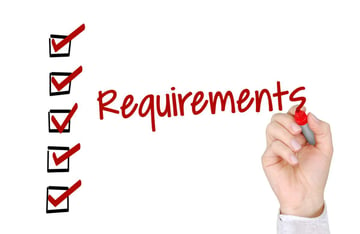How to Run Comparable Sales: Mastering the Art of Valuation with VPM’s New Course
Knowing how to run comparable sales (aka "comps") is a non-negotiable requirement for success in property management or real estate investing.
Whether you’re helping a client set a rental rate, listing a property for sale, or evaluating an investment opportunity, comps are your compass. However, not all comps are created equal, and most people are never taught how to do this correctly.
That’s why VPM Solutions created the course "How to Run Comparable Sales," available on VPM Academy, to make this foundational skill accessible, easy to learn, and applicable to real-world property management scenarios.
In this blog, we’re giving you a preview of what you’ll learn in the course, how to sharpen your valuation skills, and why this course belongs in your virtual backpack.
What Are Comparable Sales? (And Why They’re Not All Equal)
Before we go deep, let’s define a few terms you’ll hear a lot when pulling comps:
- Subject Property: The home or building you’re trying to price or evaluate.
- Comparable Property: A recently sold (or rented) property with similar characteristics.
- Adjustments: Tweaks to the comp’s sale price to account for differences between it and the subject property.
However, not all comps are practical.
That home two blocks away might be the same size on paper, but if it’s in a different school district, backs up to a highway, or was recently renovated top to bottom, it’s not a valid comp. Context is important when doing this research.
Running comps well means learning how to filter out what doesn’t fit and focus on the properties that do.
The 6 Factors That Influence Comparable Market Value
If you’ve ever wondered why two nearly identical homes sell for wildly different prices, it often comes down to one or more of these six factors.
- Location: Location trumps all. Even within the same ZIP code, homes can vary in value depending on school zones, traffic flow, or proximity to amenities.
- Similarity in Size and Features: Square footage, the number of bedrooms and bathrooms, the size of the garage, and the size of the lot matter.
- Property Condition: An outdated kitchen or water-damaged flooring changes everything. Comps need to reflect similar condition levels to be reliable.
- Age of the Property: Newer homes often sell (or rent) for more due to lower maintenance needs and modern designs. Age affects insurance, utility costs, and buyer appeal.
- Market Conditions: Interest rates, inflation, and buyer demand all impact what someone is willing to pay. A comp from six months ago might already be outdated.
- Inventory: Low supply drives prices up, while high supply pushes them down. Always check how many similar homes are currently listed in the area.
These six factors show that running comps requires technical skills and good judgment. VPM’s course teaches you how to do both.
How to Pull Comps for a Single-Family Home
Here’s a clear, step-by-step breakdown of how to pull accurate comps effectively.
Step 1: Start with County Records or Realist
County assessor websites and platforms like Realist give you access to past sales data. These sources are a great place to begin identifying similar properties.
Step 2: Cross-Reference with the MLS
The Multiple Listing Service (MLS) provides more detailed information: list vs. sale price, photos, upgrades, and Days on Market (DOM). If you have access, always cross-reference your comps with MLS data.
Step 3: Use Specific Search Criteria
Narrow your results using:
- Neighborhood or subdivision
- ±10–20% of the subject property’s square footage
- A similar number of bedrooms and bathrooms
- Same property type (don’t compare townhomes to detached houses)
You’re not looking for a lot of comps. You’re looking for the right ones.
Step 4: Tweak If You Get Too Many or Too Few
If there are too many comps, tighten the filters (shorten the date range, reduce the radius, etc.). However, if there are too few comps, loosen the criteria one at a time (expand the square footage range, include pending listings).
The course walks you through this in detail, but this basic structure gives you a solid start.
How to Analyze Comps Like a Pro
Once you’ve gathered your comps, the next step is analysis. This is where key pricing decisions are made, and many people often make mistakes.
Watch for Outliers
If a comparable property sold for significantly more (say, $50,000 above similar homes), it’s important to investigate why. Was the property recently renovated? Did it include premium features like a pool or financial incentives such as seller credits? If the differences are substantial, it may not be an accurate comparison and should be excluded from your analysis.
Understand DOM and Price Trends
Market analysis can provide valuable context when analyzing comparable sales. Pay close attention to the following indicators:
- Days on Market (DOM): If a comp took 90+ days to sell, it might have been overpriced.
- List vs. Sale Price: A big gap between list and final price could indicate price drops or negotiation.
Learn more about these essential factors in the VPM course.
Use Price Per Square Foot (Carefully)
Price per square foot can be a useful benchmark, but it shouldn’t be the sole basis for valuation. A smaller home with modern updates or a more functional layout may justify a higher price per square foot than a larger property needing renovations.
Use Quick Comp Reports (The Right Way)
Quick comp reports can streamline the process, but still require careful review. While automation is a valuable tool, informed human judgment is essential for accurate analysis.
The course transforms raw data into a straightforward, actionable narrative, equipping you with the insight to make confident decisions.
What About Rental Comps?
When it comes to rental properties, the approach to running comps shifts.
Rental comparables are often more nuanced and less standardized than sales comps. Still, they play an equally critical role, particularly for property managers aiming to set competitive and accurate rental rates.
What Makes Rental Comps Different?
With rentals, you’re not just comparing size or location. You’re factoring in:
- Appliances included
- Whether utilities are paid by the landlord or the tenant
- Lease term length
- Pet policies
- Furnishing
Why Price Per Square Foot Matters Less
Unlike in sales, price per square foot isn’t always a helpful measure in rentals. Depending on demand and amenities, a small one-bedroom apartment might rent for more per square foot than a larger three-bedroom home.
Who Needs This Course?
If you touch properties in any way, this course is for you.
This includes:
- Property managers trying to justify rental pricing
- Real estate investors evaluating potential acquisitions
- Virtual assistants supporting brokers or leasing teams
- New real estate agents learning the ropes
- Experienced pros who want a faster, more accurate system
This training is practical and results-driven—not filler. It offers a clear, step-by-step system taught by seasoned industry experts who have successfully applied these strategies to build and grow their businesses.
Learn the Full Process: Enroll in the Course
VPM’s course, How to Run Comparable Sales, guides you through the entire process. You’ll learn the foundational principles of property valuation, the exact tools professionals use to find and evaluate comps, and how to apply this knowledge to both sales and rental properties. The course also includes real-world examples and expert insights to help you put theory into practice with clarity and confidence.
If you’ve ever second-guessed a price recommendation, felt overwhelmed by market data, or simply want to improve your valuation skills, this course is built for you.
Create your free VPM profile today to access the full course: How to Run Comparable Sales.





















